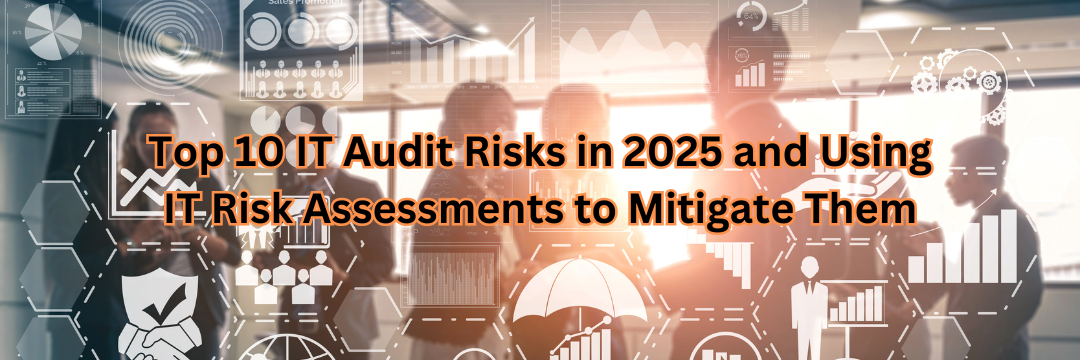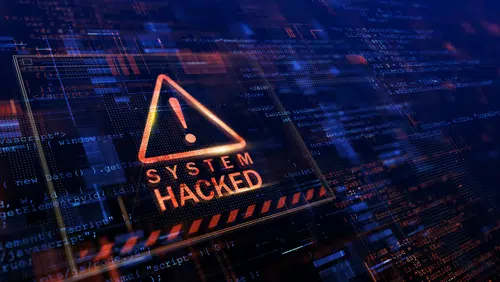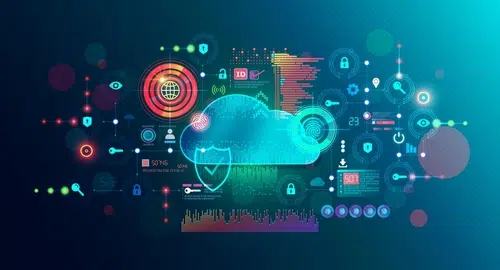Top 10 IT Audit Risks in 2025 and Using IT Risk Assessments to Mitigate Them
By Rey LeClerc Sveinsson, PhD
With technology evolving at an unprecedented pace, IT auditors face constantly shifting landscape of risks. Staying ahead of these challenges is essential for ensuring robust organizational security and compliance.
This article explores the top 10 IT audit risks for 2025 and provides actionable strategies for mitigating them, notably the use of IT risk assessments.
1. AI Implementation Risks
Risk: The rapid adoption of artificial intelligence (AI) introduces several risks that organizations must address to ensure successful and ethical deployment. Biased algorithms can lead to discriminatory outcomes, damaging an organization’s reputation and potentially exposing it to legal challenges.
AI systems can also pose a compliance risk if they fail to adhere to existing data protection and ethical standards, especially with evolving regulations around AI usage.
Mitigation: To mitigate these risks, organizations should conduct regular audits of AI algorithms to evaluate their fairness, accuracy, and compliance with regulatory requirements.
A governance framework is essential to ensure accountability in AI deployment. This framework should include clear policies for AI development, ethical guidelines, and designated roles for oversight and decision-making.
2. Cloud Security Challenges
Risk: Data breaches, often stemming from misconfigurations, pose a significant threat, as sensitive information stored in the cloud can be accessed by unauthorized individuals if proper controls are not in place.
Similarly, weak access management protocols can leave cloud environments vulnerable to cyberattacks, while compliance challenges arise when data is stored across multiple jurisdictions with differing regulatory requirements.
Mitigation: Organizations must perform regular IT risk assessments of their cloud service providers, ensuring that they adhere to industry standards and best practices. Robust access controls, such as role-based permissions and zero-trust architecture, are crucial for limiting unauthorized access.
Encryption should be applied to both data at rest and in transit to protect sensitive information. Multi-factor authentication (MFA) adds an additional layer of security, reducing the risk of account compromise.
Moreover, organizations should ensure their cloud usage complies with applicable data protection laws by conducting periodic compliance reviews and maintaining clear records of data storage locations. By addressing these risks proactively, businesses can fully leverage the benefits of cloud technology without compromising security.
3. Supply Chain Vulnerabilities
Risk: Supply chain vulnerabilities have become a critical concern as cyberattacks targeting third-party vendors continue to rise. These vulnerabilities can lead to significant disruptions, as a breach in one part of the supply chain can ripple through an entire organization.
Third-party software, hardware, or service providers may lack robust security measures, making them easy targets for attackers aiming to infiltrate interconnected networks. Furthermore, the lack of visibility into vendor security practices often leaves organizations blindsided by emerging threats.
Mitigation: To mitigate these risks, implementing a comprehensive vendor risk management program is essential. This program should include rigorous vetting of vendors during the onboarding process and continuous monitoring of their cybersecurity posture.
Requiring third-party IT risk assessments, audits and certifications, such as ISO 27001 or SOC 2, ensures vendors adhere to recognized security standards. Organizations should also establish clear contractual obligations, outlining cybersecurity requirements and incident response protocols. Building redundancy into the supply chain further enhances resilience against disruptions.
4. Ransomware Threats
Risk: Ransomware threats continue to evolve, posing a persistent and significant concern for organizations across all industries and sizes in 2025. Attackers are employing increasingly sophisticated methods, including double extortion tactics, which involve not only encrypting critical data but also exfiltrating it and threatening to release sensitive information publicly if the ransom is not paid.
These attacks result in severe financial losses, operational disruptions, and reputational damage.
Mitigation: Organizations must adopt proactive measures such as regularly backing up critical data and rigorously testing restoration processes to ensure reliability. Employee training is also crucial, enabling staff to recognize and respond to phishing attempts, which are a common entry point for ransomware.
Additionally, implementing advanced endpoint protection technologies can help detect and mitigate potential threats before they escalate. These strategies, when combined, can significantly enhance an organization’s resilience against ransomware attacks.
5. Remote Work Security Gaps
Risk: The transition to hybrid and remote work environments has heightened organizational exposure to cybersecurity risks, particularly due to the use of unsecured networks and personal devices. These gaps increase the likelihood of unauthorized access and data breaches.
Mitigation: Organizations must enforce robust endpoint security policies and mandate the use of virtual private networks (VPNs) for remote access to corporate systems. Additionally, providing employees with tailored cybersecurity training focused on remote work risks, such as recognizing phishing attempts and securing home networks, is essential.
These measures help ensure that remote work arrangements do not compromise the organization’s overall security posture.
6. Legacy System Weaknesses
Risk: Older systems are often incompatible with modern security protocols, leaving organizations vulnerable. These systems can lack essential features such as encryption, multi-factor authentication, or robust patch management capabilities.
Mitigation: Addressing these weaknesses requires a strategic and phased approach to modernizing the organization’s IT infrastructure. A comprehensive plan to replace legacy systems should prioritize those most critical to business operations while ensuring minimal disruption.
In the interim, organizations should implement compensating controls to mitigate risks. These include deploying intrusion detection systems to monitor and flag suspicious activities, applying patches and updates promptly to address known vulnerabilities, and segmenting networks to limit the spread of potential threats.
By combining long-term system upgrades with immediate protective measures, organizations can enhance their security posture while transitioning away from legacy technology.
7. Regulatory Compliance Complexity
Risk: The rapidly evolving landscape of global regulations presents a significant challenge for organizations. Navigating this complexity requires a nuanced understanding of diverse legal requirements across jurisdictions, which can strain resources and increase the risk of non-compliance.
Mitigation: Organizations must be proactive. Staying informed on regulatory changes is crucial. This can be achieved through regular training sessions, workshops, and updates tailored to evolving compliance demands.
Additionally, leveraging compliance management tools can streamline the process by automating the monitoring of regulatory requirements, generating alerts for changes, and simplifying reporting obligations.
These tools not only improve efficiency but also enhance the organization’s ability to demonstrate compliance during audits or investigations.
8. Insider Threats
Risk: Insider threats, whether stemming from malicious intent or unintentional actions, represent a significant cybersecurity risk. Disgruntled employees, contractors, or third-party partners with access to sensitive systems and data can deliberately compromise security, while well-meaning employees may inadvertently cause breaches through negligence or lack of awareness.
Mitigation: Key strategies include conducting thorough background checks and establishing ongoing monitoring of employee activity to detect unusual behavior or access patterns. Advanced technologies, such as user behavior analytics (UBA), can help identify anomalies indicative of insider threats.
Beyond technical solutions, fostering a culture of transparency and trust within the organization is crucial. Encouraging employees to report suspicious activities without fear of retaliation and providing regular cybersecurity training can reduce the likelihood of accidental breaches.
Additionally, implementing role-based access controls and regularly reviewing permissions ensures that employees have access only to the information necessary for their roles.
9. IoT Security Risks
Risk: Many IoT devices lack robust security features, making them susceptible to unauthorized access, malware, and other cyber threats. Furthermore, the sheer volume and variety of IoT devices — ranging from smart sensors and cameras to industrial control systems — make managing and securing them a complex challenge.
Without proper oversight, these devices can serve as entry points for attackers, jeopardizing network security and compromising sensitive data.
Mitigation: The first step is to maintain an up-to-date inventory of all IoT devices within the organization, including their purpose, location, and associated risks. Consistently applying firmware updates and security patches is critical to addressing known vulnerabilities and ensuring devices operate with the latest protections.
Segregating IoT devices on separate networks from critical systems and data further minimizes potential damage if a device is compromised. Additionally, implementing strong authentication mechanisms, such as unique passwords and device certificates, can prevent unauthorized access.
10. Data Privacy Breaches
Risk: The mishandling of sensitive data, whether due to intentional actions, negligence, or vulnerabilities in systems, poses a critical risk to organizations. As data privacy regulations become increasingly stringent and consumer awareness of privacy rights grows, organizations must prioritize the safeguarding of personal and sensitive information to mitigate these risks.
Mitigation: Conducting Privacy Impact Assessments (PIAs), which analyze how organizations handle personal data, is an essential step, enabling organizations to identify and mitigate potential risks associated with data processing activities.
Comprehensive training for employees on data privacy protocols ensures consistent adherence to organization privacy policies.
Investing in robust Data Loss Prevention (DLP) technologies further strengthens an organization’s defenses. DLP tools monitor, detect, and prevent unauthorized access or transfer of sensitive information, reducing the risk of data leaks.
An added layer of security can be achieved by:
- Encryption of data both at rest and in transit
- Regular audits of data storage and processing systems
The Indisputable Value of IT Risk Assessment Services
IT auditors must combine regular IT risk assessments, employee training, and a process of continuous improvement to navigate risks in the digital landscape. Building resilience starts with establishing a robust IT governance framework that aligns with organizational objectives and adapts to emerging threats.
Staying ahead of emerging threats requires not only implementing the latest security technologies but also cultivating an agile mindset that embraces change and learns from past incidents. By embedding these principles into their operations, organizations can secure their future in an increasingly interconnected world.
IT Risk Assessment Services with ERMProtect
ERMProtect can play a pivotal role in helping organizations safeguard their operations and navigate the complexities of modern cybersecurity and risk management. We offer tailored solutions that address the unique challenges organizations face in mitigating IT risks, ensuring regulatory compliance, and building a resilient security posture.
Our services include comprehensive cybersecurity assessments, penetration testing, and vulnerability management to identify and address potential threats. Our IT risk assessments ensure organizations are aligned with all types of IT security laws, regulations, and standards. These include IT risk assessments related to compliance with the NIST cybersecurity framework, GLBA, HIPAA, FISMA, FERPA, GDPR, ISO27001, the CIS security model etc.
Our IT risk assessment services give organizations assurance that an experienced, outside team has evaluated gaps in compliance and provided a roadmap that reduces cybersecurity and regulatory risks.
If interested in learning more about our services, please contact Judy Miller, [email protected], 305-447-6750.
About the Author
Dr. Rey Leclerc Sveinsson is an expert in Privacy and Data Protection, Information Security, and Technology Governance, Risk & Compliance (IT GRC). He has developed information assurance programs for major organizations globally during his career as well as serving as a Consultant for ERMProtect. He has a PhD in Information Systems and multiple master’s degrees in the areas of privacy, information technology, and cybersecurity laws.
Subscribe to Our Weekly Newsletter

Turn your employees into a human firewall with our innovative Security Awareness Training.
Our e-learning modules take the boring out of security training.
Intelligence and Insights

Are You Prepared for an AI-Powered Cyber Attack?

AI Privacy Risks






